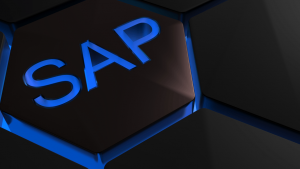- Len Riley
- Reading Time: 5 minutes

As SAP continues to position itself as a leader in generative AI and innovative technologies, customers must use these predictions for SAP customers to prepare to navigate new service offerings and an inevitable move to SAP RISE.
SAP customers have a lot to navigate in 2024. A host of new product and feature launches, questions about SAP’s plans for managing commitments to legacy platform customers, and the acceleration of generative AI in popular products such as SAP RISE are just a few of the major issues enterprise SAP customers will need to keep on top of in the year ahead.
Here are five predictions about what will play out for SAP customers as the year goes on, along with follow-on effects and questions SAP customers will have to address in their wake.
1. SAP RISE will be an inevitable part of customers’ journey to the cloud
Customers will begin to come to terms with the inevitability of RISE beyond SAP’s obvious motivations to drive adoption for increased renewable revenue and backlog bookings. You should no longer assume SAP is simply interested in managing infrastructure or introducing a new product repackaging and license scheme. Those listening to SAP with intent will come to appreciate that SAP’s goal is to position itself for accelerated growth via next-generation platforms, enabled by generative AI, by leveraging customer data accessed through its RISE and GROW offerings.
Companies that are skeptical of SAP’s intent should look no further than SAP’s recent press conference where CEO Christian Kline spoke of the consent SAP has received from 30,000 customers to leverage their data to inform SAP’s foundational models for the purpose of solving complex business problems. Additional evidence of SAP’s intention is their highly controversial choice to only offer their next generation AI and sustainability solutions via RISE and GROW.
As such, customers should prepare their organizations to undertake an extensive, holistic evaluation of RISE from a technical, operational, financial, and commercial perspective. In addition, SAP customers should understand the benefits, protections, and limitations that SAP will provide in exchange for access to data. Consider the potential business implications, including the potential to disrupt customers’ current and future business models and create unforeseen competitive disadvantages.
2. SAP will leverage client success stories to influence and drive RISE adoption
Over the past three years, SAP has set the stage for RISE and GROW with SAP, obtaining a certain degree of adoption by industry. But referenceable flagship implementations across industries are limited, particularly at the enterprise customer level.
As early adopters begin to communicate the benefits of successful RISE implementations, and SAP announces more flagship customer wins, pressure on industry executives will increase. This will occur despite several customer challenges SAP must overcome, including:
- The need to evaluate the benefits of RISE vs. S/4 HANA On-Premise
- Complexity of RISE operating and commercial models
- Confidence in SAP to provide operational support
- SAP implementation fatigue
Despite these challenges, expect customer leadership to be concerned that their company’s roadmap is potentially deviating from SAP’s strategy, putting them at risk of losing their competitive advantage due to a lack of access to innovations via SAP RISE. Midlevel leadership should not underestimate SAP’s ability to position their vision, successes, and $2.2B restructuring initiative, which could affect up to 8,000 SAP employees, to influence executive leadership.
Those responsible for their company’s SAP relationship should be prepared to conduct a thorough evaluation of RISE to justify why maintaining the status quo (i.e., remaining on ECC or S/4 On-Premise) is the correct course of action to counteract SAP’s influence. Otherwise, SAP will have disproportionate control of the agenda, cadence, and outcome of your relationship.
3. SAP commercial models will evolve as RISE and GROW business practices develop
The introduction of new technology always has an impact on technology providers, product packaging, pricing, and contracting models. The introduction of RISE and GROW is no different. But the impact on SAP customers migrating from existing license agreements to SAP RISE is substantial, and includes the following considerations:
- Alignment on RISE package options — Base, Premium, or Premium Plus
- Conversion from perpetual to subscription license models
- Alignment on infrastructure and operational support requirements
- Negotiation of security, data protection, and data use rights
In addition to assessing the above implications, SAP customers will also need to evaluate and assess the following SAP RISE commercial models and variations that have been introduced over the past three years, including:
- Public Cloud Edition Model
- Private Cloud Edition Model
- Private Tailored Option Model
- Enterprise Edition Model
SAP’s recent announcement of its RISE with SAP Migration and Modernization program drives an additional point of consideration for SAP customers. The program, available for both ECC and S/4 On-Premise customers, helps you navigate scope and cost in your move to the cloud, making it clear that SAP is aware of the complexities around the transition to the cloud.
SAP is still at the very early stages of RISE adoption, and our experience and recent news has shown that SAP is willing to adapt and offer creative models for customers. At this point in time, however, SAP’s business practices are starting to take shape, and customers would be well advised to assess their short- and long-term leverage position as they contemplate the next phase of their SAP journey.
4. Consultants will lean into generative AI to deliver transformation initiatives
Consulting service providers, such as Accenture, Deloitte, EY, IBM, and PwC, will demonstrate how their investments in generative AI are transforming their implementation methodologies and accelerators to enable SAP transformation initiatives. The pressure to deliver AI innovations will also be critical to addressing the resource constraints, skill gaps, and inflationary pressures facing these firms.
In addition to bringing their own AI innovations to market, these consulting firms are being pushed to upskill thousands of consultants on their own technology platforms as well as SAP’s roadmap and platforms. Customers considering a strategy to remain on S/4HANA On-Premise should consider the potential impact on the quality of resources that will be assigned to their program. This becomes especially critical given the consultants’ desire to work on programs implementing the latest-generation technology and the firms’ motivation to demonstrate RISE implementation successes.
Customers should construct their SAP system implementation partner evaluation in a manner that compels the consulting firms to demonstrate these capabilities as well as the associated risks and benefits. In addition, SAP customers should identify how their prospective consulting firm’s solution will align with SAP’s tools and accelerators. Lastly, customers undertaking their own generative AI initiatives should identify how the consulting firm’s AI strategy will integrate with their strategy, implementation roadmap, and future state operating model.
5. Re-evaluation of the SAP ecosystem will parallel evaluations of SAP RISE
The introduction of SAP RISE and GROW has impacted the entire SAP partner ecosystem, including technology and service providers’ go-to-market strategies, offerings, and commercial relationships with customers. As customers evaluate RISE, they will be well served to assess the impact of adopting RISE on their existing non-SAP partnerships.
For example, organizations with existing relationships with AWS, Google Cloud Platform (GCP), and Microsoft Azure need to determine the impact of relinquishing the workload associated with their SAP environment from their hyperscaler partner to SAP. This includes the impact on existing consumption agreements, access to potential migration credits and access to future innovations. For many organizations, the percentage of their IaaS workloads are primarily related to SAP. However, most organizations have a broader cloud strategy and relationships that need to be put into an appropriate context to ensure desired outcomes.
Additionally, many organizations have existing application management and infrastructure management relationships with Accenture, Cognizant, HCL, Infosys, TCS, and Wipro. As organizations move SAP and other workloads to the cloud, a holistic assessment of these relationships in the context of adopting RISE must be conducted. In many cases, these agreements need to be completely reconstructed, and alignment between the responsibilities of SAP, the third-party organization, and the customer needs to be reconciled.
Customers also must consider internal initiatives, including their own application of generative AI, its impacts on organizational structure and their managed services relationships, as well as the implementation of SAP RISE to ensure a holistic strategy is developed and effectively executed.
In the coming year, SAP customers will be tasked with making critical decisions that will determine the success of their digital transformations, next-generation operating model, relationship with SAP, and their complementary partners. Undergoing a holistic sourcing and evaluation process will be the key to ensuring executives are effectively positioned to navigate the SAP ecosystem and make well informed decisions that position their company for success.
Reprinted with permission. © IDG Communications, Inc., 2024. All rights reserved.
